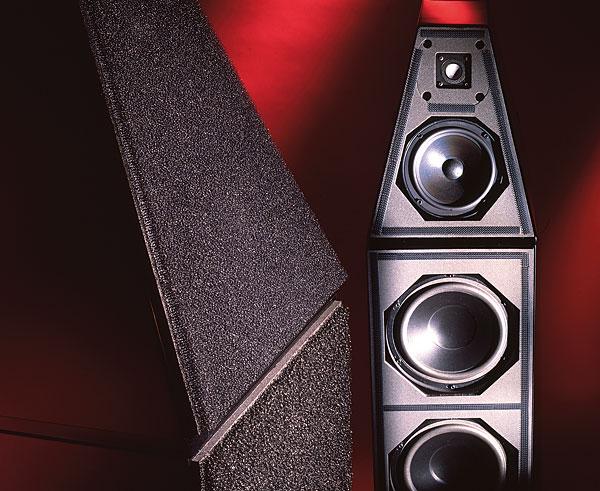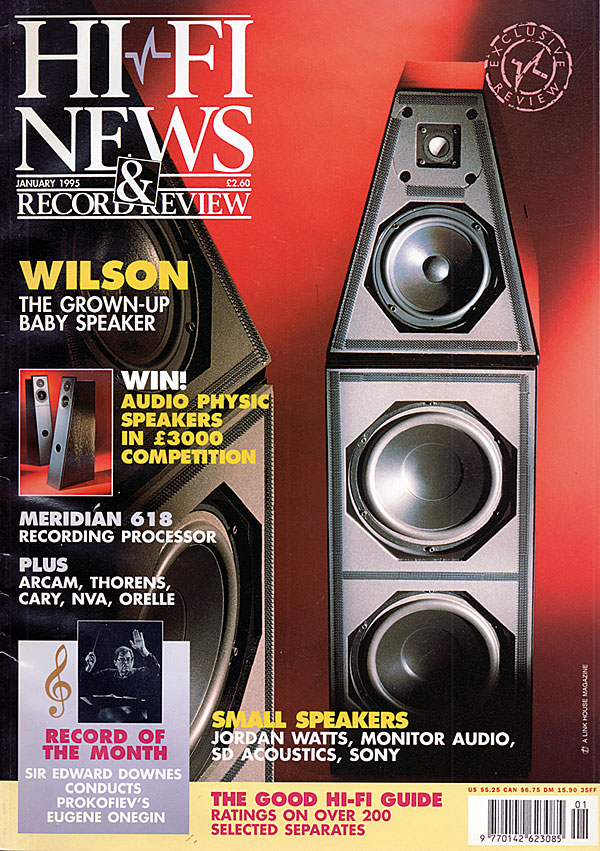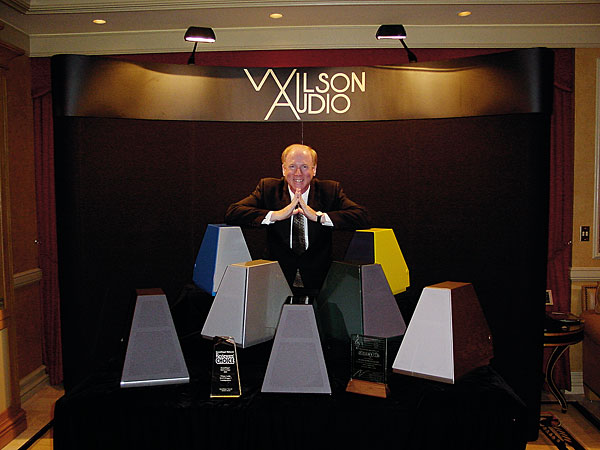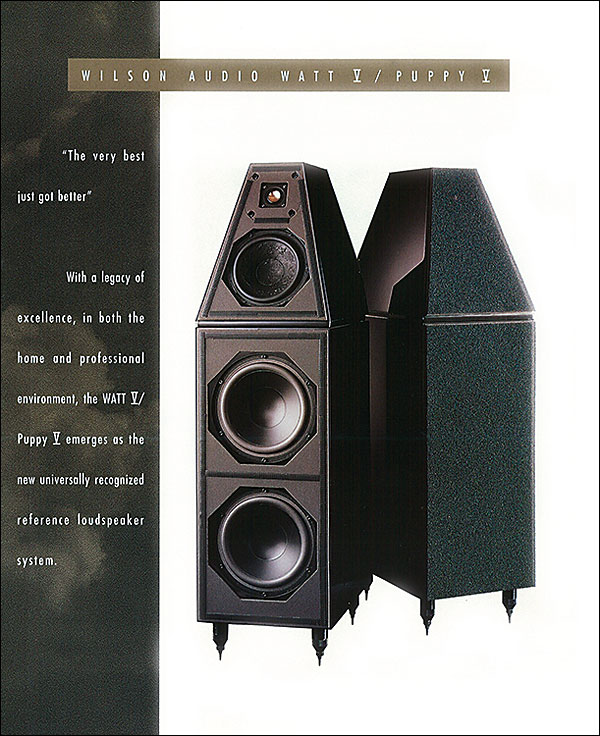Wilson Audio System V Loudspeaker

 Wilson Audio's Tiny Tot and matching Puppy subwoofer reach maturity with the new System V versions. Martin Colloms and Ken Kessler listen
Wilson Audio's Tiny Tot and matching Puppy subwoofer reach maturity with the new System V versions. Martin Colloms and Ken Kessler listen
During the preliminaries for this review I suffered a major blow at around 3am one morning [writes Martin Colloms]. I was woken up by a thundering roar from the listening room that sounded like a door being smashed down by men with sledgehammers and which wrote off a number of drivers in the speakers.
It seems that some kind of power transient set off a chain of events in my amplifier system, leading to the partial destruction of the System V. Fortunately replacements were not too far away and there proved to be an unexpected bonus from Wilson Audio following the damage report. More on this later, but first the background to the System V.

Technology Used
Although it may look identical to the WATT 3/Puppy 2, the System V is packed with changes that speak of a fundamental redesign. Taking the Puppy subwoofer first, the base, top and driver baffle have been reinforced by heavy laminated phenolic panels, derived from the Grand SLAMM X-1. The two Dynaudio 210mm bass drivers used per Puppy remain but the interior acoustics have been altered and a new tuning duct appears at the rear. The Puppy's bandwidth is nominally 30Hz to 150Hz, the upper rolloff defined by a first-order crossover.
Meanwhile, the WATT's distinctive pyramidal shape neatly adorns the top of the Puppy, and surprisingly the loudspeaker as a whole looks less box-like than you might expect.

A Tale Of Tails
As before, this superlative mirror gloss cabinet is built in Corian, a synthetic marble, cross braced and critically damped with seismic lead blocks. The System V is a single-input speaker, the amplifier signal entering the terminal panel of the Puppy and the upper range output to the WATT emerging at a second pair of terminals. A Wilson Audio umbilical cable, playfully called the Puppy Tail, links the Puppy to the WATT.
Despite the use of second-order 12dB per octave crossovers throughout the new System V, there is a degree of overlap between the Puppy and the WATT in the bass frequency range. Support is given by its own bass-reflex tuning loaded by a short 30mm-diameter interchangeable alloy duct.
![]() Sound Quality
Sound Quality
Amplifiers used for the listening included the Audio Research VT150, the Conrad-Johnson Premier 8A, plus the Krell KAS-2. The WATT V was generally rather tolerant of electronics and could make very pleasant sounds with the better integrated amplifiers used, and even with designs as inexpensive as the Exposure 20.

Signal sources ranged from the Wadia 16 CD player to the Audio Synthesis DAX decoder with a Krell MD10-T/ Studio player combo. Analogue music was generated by a van den Hul Grasshopper IV GLA feeding an equalisation-matched Conrad-Johnson PV12 all-triode preamp. The carrier was a Linn LP12 Lingo /Naim Aro on Mana Phase Four tables.
On first hearing, the System V was a disturbing experience. As a long-standing WATT/Puppy owner, I was quite unprepared for the scale and depth of the changes to this speaker. New mid and treble units have radically altered the sound, and mainly for the better.
Its predecessor could be a stern taskmaster, with a tendency to hardness. Inner colorations could result in problems with system matching and room acoustics. If the very considerable virtues of the WATT 3/Puppy 2 were to be fully appreciated, great care was needed in overall system alignment. By comparison, the System V is tonally rich, creamy and fairly distant. It has rather more bass now, extending fully into the lower octave. It also has a substantially smoother mid as well as a sweeter, more even treble.
























































